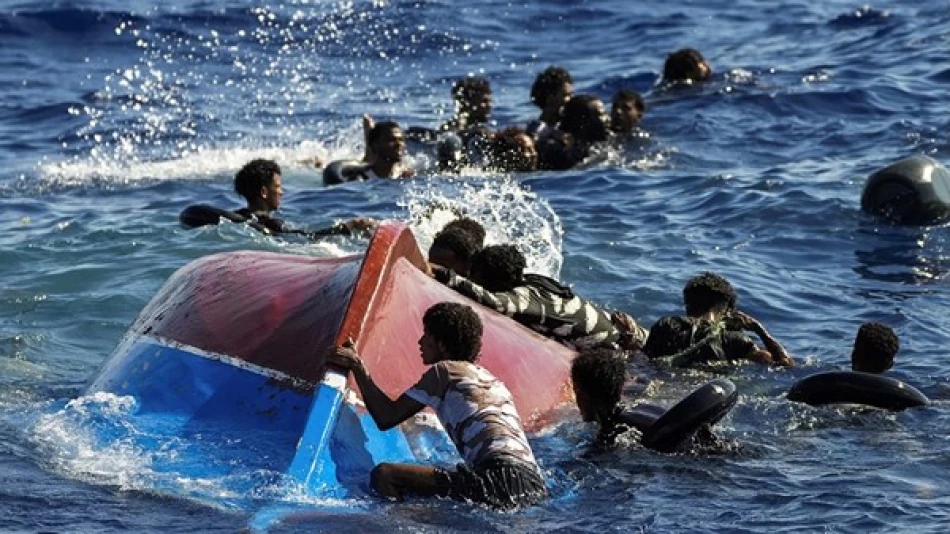
Tragic Fate: 7 Migrants Perish from Hunger and Thirst Off Yemen's Shores
Seven African Migrants Die of Starvation on Failed Yemen Crossing as Horn of Africa Crisis Deepens
A broken-down boat carrying 250 African migrants drifted for seven harrowing days across the Gulf of Aden before reaching Yemen's shores, leaving seven dead from hunger and thirst in what highlights the escalating desperation driving dangerous sea crossings from the Horn of Africa. The tragedy underscores how economic collapse and conflict are pushing migrants toward increasingly perilous routes, even as Yemen remains mired in its own humanitarian crisis.
A Week of Hell at Sea
The vessel departed from Bosaso, Somalia, with 250 passengers—155 men, 95 women, and 82 children—on what should have been a 24-hour journey to Yemen. Instead, mechanical failure just 100 nautical miles into the trip turned the crossing into a week-long ordeal powered only by wind and manual rowing.
When the boat finally reached Yemen's Arqa region on Tuesday, UN International Organization for Migration (IOM) teams found survivors suffering from severe dehydration, starvation, and exposure. Mobile medical units provided immediate water, food, and healthcare, transferring the most critical cases to nearby clinics where they received life-saving treatment before being discharged in stable condition.
The Human Cost of Desperation
"These people lived through a week of hell on the high seas and were subjected to exploitation, terror, and psychological trauma," said Abdusattor Esoev, IOM's mission chief in Yemen. His warning that tragedies will continue as vulnerable migrants undertake increasingly dangerous journeys proved prophetic—just hours after this incident was reported, Yemeni medical sources confirmed that 92 Ethiopian migrants had died in a separate boat sinking off Yemen's coast on Sunday.
The Eastern Route's Deadly Appeal
The Somalia-to-Yemen crossing represents part of what migration experts call the "Eastern Route"—a pathway that has become more attractive to Horn of Africa migrants as Mediterranean crossings face increased European enforcement. Unlike the well-documented Central Mediterranean route, this passage receives less international attention despite comparable death rates.
The irony is stark: migrants fleeing poverty and conflict in Somalia and Ethiopia are risking their lives to reach Yemen, itself one of the world's worst humanitarian disasters. Yet Yemen serves as a potential gateway to wealthier Gulf states, making the dangerous crossing seem worthwhile to those with few alternatives.
A Perfect Storm of Crisis
Several factors are converging to make these crossings both more frequent and more deadly. Somalia continues to battle severe drought, economic instability, and Al-Shabaab insurgency. Ethiopia faces internal conflict and economic challenges that have displaced millions. Meanwhile, traditional migration routes through Libya have become more militarized and expensive.
The mechanical failure that doomed this particular crossing reflects the predatory nature of human smuggling networks, which often use unseaworthy vessels and provide minimal safety equipment. Migrants typically pay substantial fees for these journeys—money that represents life savings or borrowed funds that leave families in debt.
Limited Options, Mounting Risks
Yemen's own crisis complicates any humanitarian response. The country lacks the infrastructure and resources to properly process or support arriving migrants, creating a bottleneck that often leaves people stranded in dangerous conditions. International aid organizations like IOM operate with limited funding and access, able to provide emergency assistance but unable to address root causes.
The timing of these incidents—two major tragedies within days—suggests a seasonal increase in crossing attempts, possibly linked to weather conditions or economic pressures in origin countries. This pattern mirrors other migration routes where certain periods see concentrated activity and corresponding spikes in casualties.
Beyond Emergency Response
While immediate humanitarian assistance remains crucial, these repeated tragedies highlight the need for broader policy approaches. Regional cooperation between Horn of Africa states, Gulf countries, and international partners could potentially create safer, legal migration pathways that reduce reliance on dangerous sea crossings.
The Gulf states, which are often the ultimate destination for these migrants, have both the economic capacity and strategic interest to invest in addressing root causes of displacement in the Horn of Africa. Economic development programs, conflict resolution efforts, and expanded legal migration opportunities could reduce the desperation that drives people onto overcrowded, unseaworthy boats.
For now, organizations like IOM continue their emergency response work, knowing that each rescue operation likely represents dozens of others that go undetected. The seven deaths reported in this incident, and the 92 from the Ethiopian boat, represent not just statistics but individual stories of hope turned to tragedy in one of the world's most dangerous migration corridors.
 Layla Al Mansoori
Layla Al Mansoori







